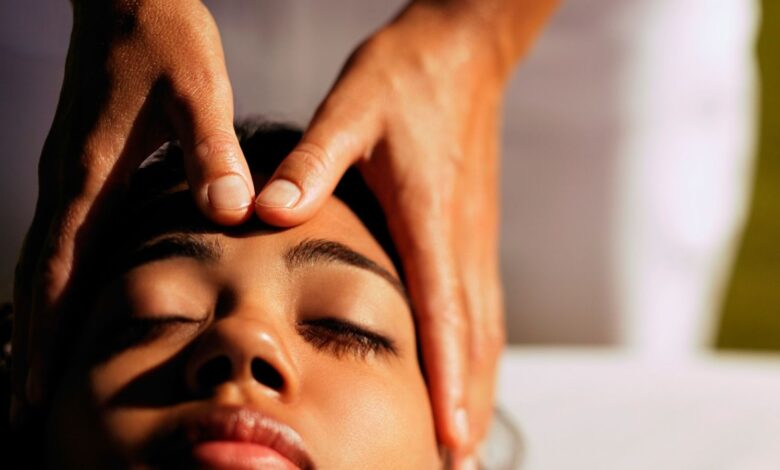The Complete Guide to Massage App Development: Transforming Wellness in the Digital Age

In today’s fast-paced world, where stress and tension seem to be constant companions, the demand for relaxation and wellness services is higher than ever. Massage therapy, with its myriad of health benefits, has become increasingly popular among individuals seeking relief from the pressures of modern life. With the advent of technology, accessing massage services has never been easier. Massage app development has emerged as a revolutionary solution, connecting users with skilled therapists and providing convenient access to a wide range of massage treatments at their fingertips. In this comprehensive guide, we’ll explore the ins and outs of massage app development, from understanding the market landscape to building a successful massage app that meets the needs of users and therapists alike.
In this comprehensive guide, we’ll explore the ins and outs of massage app development, from understanding the market landscape to building a successful massage app that meets the needs of users and therapists alike. By leveraging the expertise of offshore mobile app development company and offshore android app development company, businesses can ensure that their massage app stands out in a crowded marketplace, delivering unparalleled convenience and relaxation to users worldwide.
Understanding the Market Landscape
Before delving into the development process, it’s essential to gain a thorough understanding of the massage therapy market landscape. The global wellness industry, including massage services, is experiencing rapid growth, driven by increasing health consciousness and a growing focus on self-care. According to market research, the global massage equipment and accessories market is projected to reach billions by 2025, indicating a significant opportunity for innovation and expansion in the massage sector.
Moreover, the advent of on-demand service apps has transformed consumer expectations, making convenience and accessibility key priorities. As such, there’s a growing demand for massage apps that offer seamless booking, flexible scheduling, and a wide range of massage options tailored to individual preferences and needs.
Key Features of a Massage App
To create a successful massage app that resonates with users and delivers value, it’s crucial to incorporate essential features that enhance the user experience and streamline the booking process. Here are some key features to consider:
User Features:
- User Registration and Profiles:
- Allow users to create accounts and profiles, where they can manage their booking history, preferences, and payment information.
- Search and Filters:
- Implement robust search functionality, enabling users to find nearby massage therapists, and filter results based on criteria such as location, availability, and specialty.
- Booking and Scheduling:
- Enable users to book appointments with ease, choose their preferred date, time, and type of massage, and receive real-time confirmation notifications.
- Secure Payment Gateway:
- Integrate a secure payment gateway that supports various payment methods, ensuring a seamless and hassle-free booking experience for users.
- Rating and Reviews:
- Allow users to rate and review their massage experiences, helping build trust and credibility within the app community.
Therapist Features:
Therapist Profiles
- Enable therapists to create detailed profiles showcasing their qualifications, specialties, availability, and pricing.
- Availability Calendar: Provide therapists with an availability calendar where they can manage their schedule and update their availability in real-time.
Booking Management:
- Streamline the booking process for therapists, allowing them to accept or reject appointment requests, view their upcoming appointments, and communicate with clients.
Earnings
- Dashboard:
- Offer therapists an earnings dashboard where they can track their earnings, view payment history, and manage payouts.
Admin Features:
- Dashboard and Analytics:
- Provide admins with a comprehensive dashboard that offers insights into app
- performance, user engagement, booking trends, and revenue generation.
- User and Therapist Management:
- Enable admins to manage user accounts, therapist profiles, and ensure compliance with app policies and guidelines.
- Push Notifications:
- Implement push notification functionality to send timely reminders, promotions, and updates to users and therapists.
- Payment Management:
- Facilitate seamless payment processing and manage transactions, including commission fees, refunds, and payouts to therapists.
Development Process
Now that we’ve outlined the key features of a massage app, let’s dive into the development process:
Step 1: Market Research and Planning
Conduct thorough market research to identify your target audience, understand their needs and preferences, and assess the competitive landscape. Use this information to create a detailed business plan, outlining your app’s unique value proposition, revenue model, and marketing strategy.
Step 2: Design and Prototyping
Work with experienced UI/UX designers to create intuitive and visually appealing app interfaces that prioritize user experience. Develop wireframes and prototypes to visualize app functionality, gather feedback from stakeholders, and iterate on design concepts before moving to the development phase.
Step 3: Frontend and Backend Development
Utilize modern frontend and backend technologies to build a scalable and responsive massage app. Implement robust APIs to facilitate seamless communication between the client-side app and server-side infrastructure. Focus on performance optimization, security, and compatibility across different devices and platforms.
Step 4: Integration of Key Features
Integrate the key features outlined earlier, ensuring they align with user requirements and business objectives. Pay special attention to usability, accessibility, and data privacy considerations throughout the development process.
Step 5: Testing and Quality Assurance
Conduct rigorous testing across multiple devices, browsers, and operating systems to identify and address any bugs or issues. Perform functional testing, usability testing, and performance testing to ensure the app meets quality standards and delivers a seamless user experience.
Step 6: Deployment and Launch
Prepare for app deployment by setting up app store accounts, creating compelling app store listings, and adhering to platform guidelines and submission requirements. Coordinate a strategic marketing campaign to generate buzz and attract users to download and use your massage app.
Step 7: Post-launch Support and Maintenance
Continue to monitor app performance, gather user feedback, and implement updates and improvements based on user insights and market trends. Provide ongoing technical support, address customer inquiries promptly, and stay responsive to emerging challenges and opportunities in the massage therapy industry.
Monetization Strategies
There are several monetization strategies you can explore to generate revenue from your massage app:
- Booking Fees:
- Charge users a commission or booking fee for each massage appointment booked through the app.
- Subscription Plans:
- Offer subscription plans with premium features and benefits, such as access to exclusive discounts or priority booking.
- In-app Purchases:
- Enable users to purchase additional services or upgrades within the app, such as extended massage sessions or add-on treatments.
- Advertising:
- Partner with massage therapists, spas, and wellness brands to display targeted ads or promotions within the app.
- Partnerships and Affiliations:
- Establish partnerships with local massage businesses or wellness providers and earn commissions for referrals or bookings made through the app.
Case Study: Successful Massage App Examples
Let’s take a look at some successful massage apps that have made a significant impact in the industry:
- Soothe:
- Soothe is an on-demand massage app that connects users with licensed massage therapists who provide in-home massages. With its easy booking process and quality service, Soothe has gained popularity among users seeking convenient and professional massage therapy.
- Zeel:
- Zeel offers a similar on-demand massage service, allowing users to book massages delivered to their home, hotel, or office. Zeel’s network of certified therapists and seamless booking experience has earned it a loyal customer base and positive reviews.
- MINDBODY:
- While not exclusively focused on massage therapy, MINDBODY is a comprehensive wellness app that connects users with fitness classes, spas, and massage therapists in their area. Its intuitive interface and extensive network of wellness providers make it a go-to platform for users looking to prioritize their health and well-being.
Conclusion
As the demand for wellness services continues to rise, massage app development presents a lucrative opportunity for entrepreneurs and businesses looking to tap into this growing market. By understanding the needs of users and therapists, incorporating essential features, and following a systematic development process, you can create a massage app that not only meets the demands of today’s consumers but also sets you apart from the competition. Whether you’re a startup venturing into the wellness industry or an established brand expanding your digital presence, investing in massage app development can yield substantial returns and position you as a leader in the evolving landscape of digital wellness solutions. Embrace the opportunity to transform the way people access and experience massage therapy, and embark on a journey to wellness innovation that benefits both individuals and businesses alike.




